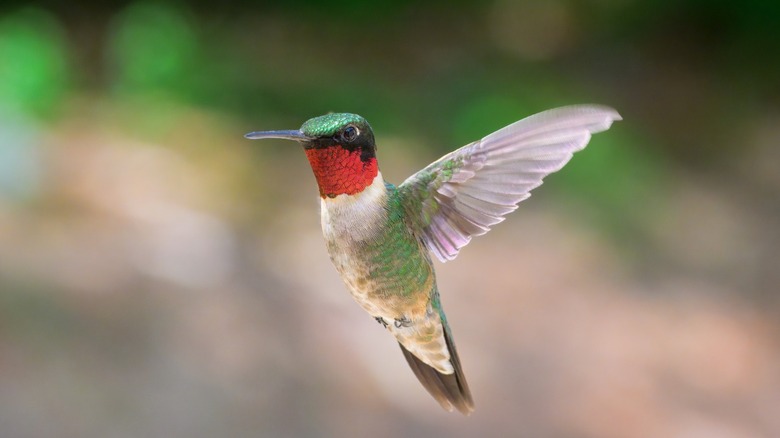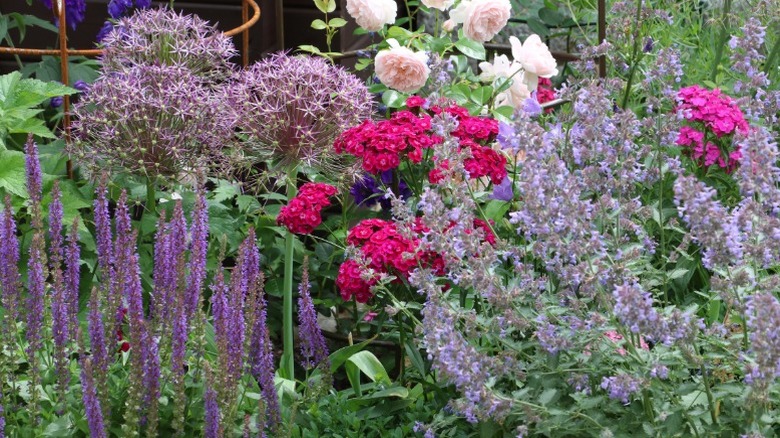Plant These Two Flowers Together In October For A Hummingbird-Filled Garden In Spring
We may receive a commission on purchases made from links.
October may signal the end of hummingbird season in the U.S., but that doesn't mean you can't plan ahead for the spring. While the hummingbirds are away for the rest of the year, consider what types of plants you can get in the ground now to help welcome them later. One of the best tips for preparing your yard for spring hummingbirds is to grow nectar-rich plants, like dianthus (Dianthus spp.) and salvia (Salvia spp.) If you start to cultivate these two great hummingbird-attracters in the fall, you are ahead of the game come springtime.
Most dianthus species are cool-season flowers that thrive in cooler temperatures and might not perform well in very hot weather. Many dianthus cultivars are classified as hardy annuals that tolerate light frosts. Planting them in fall ideally lets them grow strong in cooler weather to get a jump on spring growth. Other dianthus flowers you can plant in October include herbaceous perennials that die back after a frost, but return in the spring. Compared to dianthus, many salvia species and cultivars grow well in warm weather and drought conditions, but cool-season dianthus pairs well with salvia that starts blooming in early spring. Planting this type of salvia in October can be beneficial to give it time to establish itself before it starts blooming.
Plant dianthus and salvia in the fall for a spring-time reward
A little extra time spent in the garden in the fall means a beautiful reward in the spring when hummingbirds stop for the sweet nectar your yard has to offer. Seek out spring bloomers to plant in preparation of hummingbird season like pretty dianthus and salvia. Hummingbirds are more likely to seek out areas densely planted with nectar-rich plants, making these two spring-blooming flowers ideal companions. Most salvia species can be direct seeded, while dianthus are typically placed in the garden as a transplant in the fall. An exception is sweet William (Dianthus barbatus) which can be direct seeded in fall to allow for cold exposure.
When choosing salvia to plant in October, only seek out perennial species. Annual salvia should not be planted in the fall months. While there are many beautiful perennials that hummingbirds love, opt for a perennial species of salvia like woodland sage (Salvia nemorosa) that will start blooming around or after your dianthus. This native salvia does best when sown in the fall to have time to establish strong roots and is hardy in zones 4 through 8. In your garden, pair woodland sage with sweet William, a popular dianthus species that is long-blooming and hardy in zones 3 to 9. You can also try it next to classic cottage pink (Dianthus plumarius), which is hardy in zones 3 to 9 and typically blooms in May. Cottage pinks also rely on a little frost exposure, which makes fall planting a good practice.

